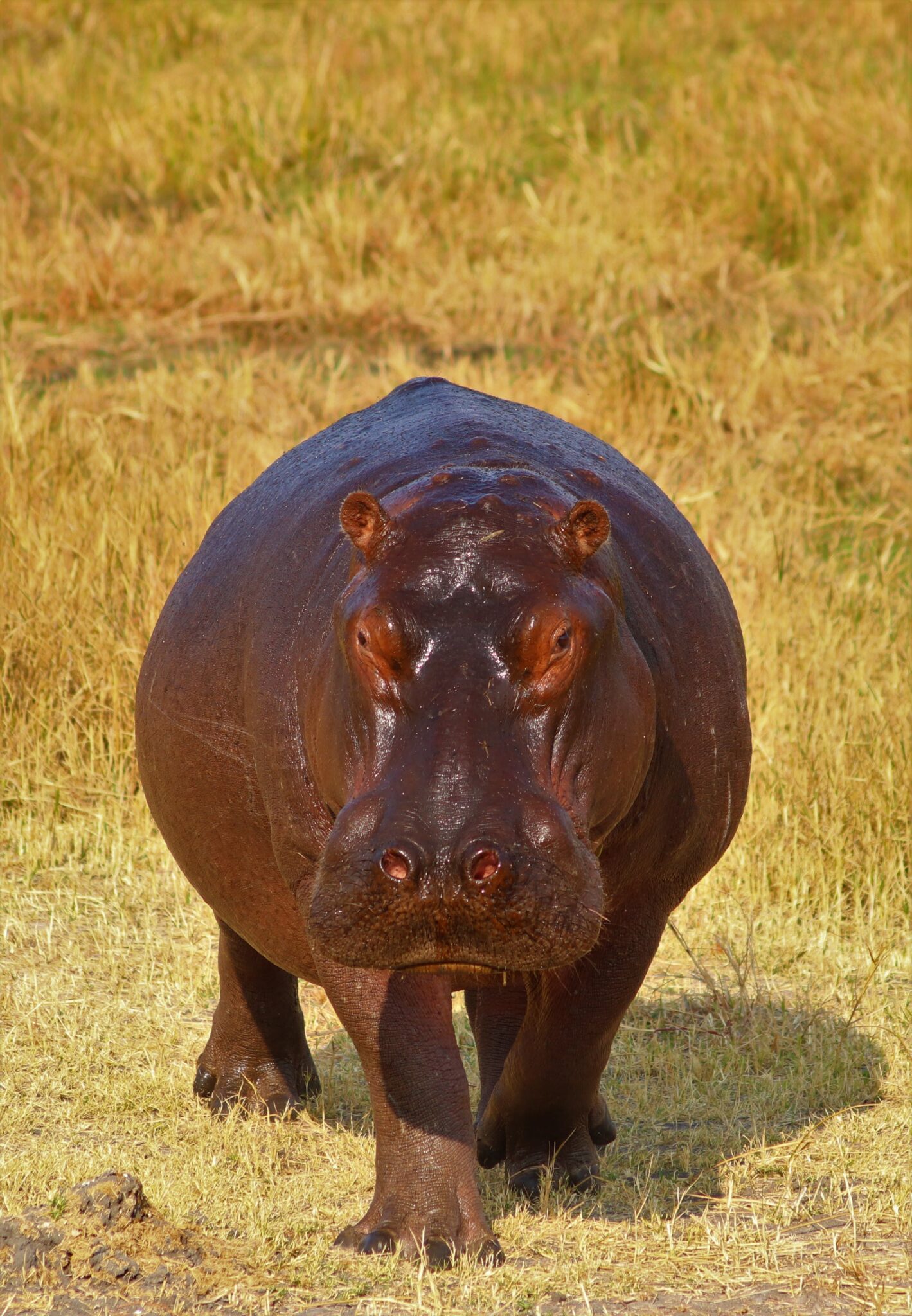When we think about African game hunting safaris, the term "Big 7" often sparks curiosity. While many have heard of the Big 5, elephant, lion, leopard, rhinoceros, and Cape buffalo—the Big 7 adds two more remarkable species to the list, making the adventure even more unique.
Understanding what the Big 7 in Africa means helps us appreciate the scale and variety of wildlife experiences available on the continent. For those of us interested in game hunting safaris, knowing about the Big 7 gives us a clearer picture of what to expect and how these hunts are tailored for those seeking the ultimate challenge.
[DYNAMIC-BLOGTABLEOFCONTENT]
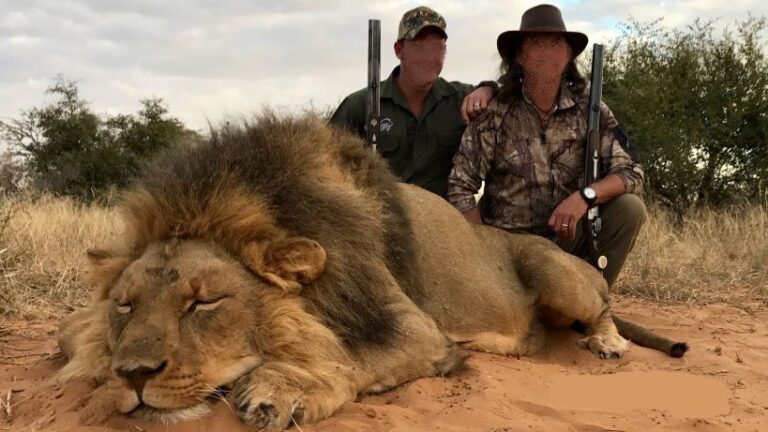
Key Takeaways
-
The "Big 7" in Africa refers to seven iconic game species: elephant, lion, leopard, rhinoceros, Cape buffalo, hippopotamus, and crocodile—expanding on the traditional Big 5 by including hippo and crocodile.
-
Big 7 hunting safaris offer a more diverse and challenging experience, requiring expertise in both land and aquatic environments, and are highly sought after by international hunters.
-
These hunts are typically regulated and managed by professional brokers and guides, contributing revenue to local economies, wildlife management, and anti-poaching efforts.
-
Key destinations for Big 7 safaris include South Africa, Botswana, Tanzania, Zimbabwe, and Namibia, each offering unique challenges and environments for hunters and wildlife enthusiasts.
-
Conservation efforts, including ethical quotas, habitat protection, and community involvement, are critical in preserving Big 7 species and supporting sustainable tourism and hunting practices.
-
The Big 7 concept highlights the importance of Africa's wildlife diversity, drawing enthusiasts for hunting, photography, and eco-tourism, and reinforcing the continent’s reputation as a premier destination for wildlife experiences.
Overview Of The Big 7 In Africa
The Big 7 in African game hunting combines the classic Africa Big 5 with two additional dangerous game species. Hunters pursuing an African hunting safari list elephant, lion, leopard, rhino, and Cape buffalo as the core group. We add hippopotamus and crocodile to form the full Big 7 for those seeking the ultimate hunting safari in Africa.
The Expanded Group: Big 5 Plus 2
-
Africa Big 5: Elephant, lion, leopard, rhinoceros, and Cape buffalo dominate African hunting safari listings due to their challenge and prestige.
-
Additional Species: Hippopotamus and crocodile join the original five, completing the Big 7 found in specialist hunting safari in South Africa packages and other African hunting safari zones.
Unique Challenges Of The Big 7
Big game hunting for the Big 7 requires a deep understanding of animal behavior, safety protocol, and bushcraft. Each game animal, such as the elusive leopard or powerful Cape buffalo, presents distinct tracking and hunting demands. Crocodile and hippo add aquatic elements to hunting in Africa, requiring a different set of skills when compared to land-based species. Engaging with a professional hunting guide or broker on guided African hunts typically boosts safety and success rates.
Popularity In Game Hunting Safaris
Big 7 hunts have become a sought-after milestone for international hunters, featuring prominently in African hunting listings and package offerings. These safaris provide not only a complex challenge but also an introduction to a wide variety of African environments, from thick bush to riverbanks. Cape Buffalo Hunts, for instance, are often paired with hippo or crocodile opportunities, expanding the game portfolio.
Table: The Big 7 In African Game Hunting
|
Species |
Habitat Type |
Notable Challenge |
|---|---|---|
|
Elephant |
Savanna, Forest |
Size, unpredictable movement |
|
Lion |
Savanna |
Group hunting, aggression |
|
Leopard |
Woodland |
Elusiveness, nocturnal behavior |
|
Rhinoceros |
Grassland |
Poor vision, high strength |
|
Cape Buffalo |
Grassland |
Herd defense, alertness |
|
Hippopotamus |
Wetlands |
Water aggression, territorial |
|
Crocodile |
Rivers, Lakes |
Ambush tactics, aquatic stalking |
Understanding the Big 7 provides a framework for selecting African hunting safari broker services, evaluating hunting packages, or comparing game hunting opportunities across the continent. This knowledge helps set expectations for anyone planning a guided African hunt or researching the complexities of big game hunting in Africa.
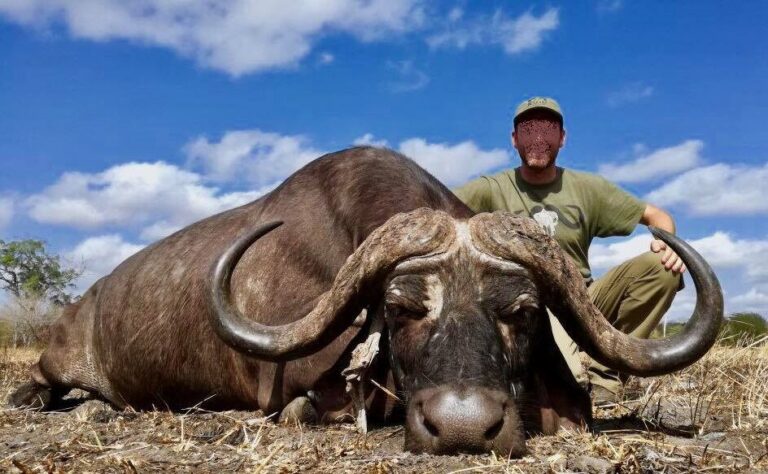
Origins And Significance Of The Big 7 Concept
The Big 7 concept in African hunting safaris builds on the foundation of the Africa Big 5: the elephant, lion, leopard, rhinoceros, and Cape buffalo. Hunters often recognize these animals as symbols of both big game hunting skill and Africa’s untamed landscapes. Safari companies and African hunting safari brokers first popularized the Big 5 as marketing shorthand for the most challenging and rewarding species targeted during a hunting safari in Africa.
And yet, as more hunters began exploring a wider range of game hunting experiences, two aquatic giants—the hippopotamus and Nile crocodile—joined the list. This shift broadened the appeal, connecting more enthusiasts to diverse guided African hunts. The transition from Big 5 to Big 7 didn’t just reflect animal counts. Instead, it marked a turning point in expectations for African hunts, as clients looked for greater excitement and more comprehensive listings in their hunting packages.
Adding crocodile and hippo to the original five species also made African hunting safari options more inclusive for those seeking both land and water-based challenges. Today, the Big 7 serves as a benchmark for hunters wanting to test their proficiency across various habitats, from savannah grasslands to river systems.
Why the Big 7 Matters in Game Hunting Safaris
-
Comprehensive Challenge: The Big 7 targets major land and aquatic species, creating a broader skill test than traditional Cape Buffalo hunts or Africa Big 5 quests.
-
Hunting Safari Packages: Most African hunting safari brokers now use the Big 7 to organize advanced hunting safari in South Africa or other regions, offering clear combos in their game hunting listings.
-
Recognition in the Community: Completing the Big 7 earns recognition in many circles, setting a hunter apart in both casual conversations and formal big game hunting clubs.
Historic and Modern Impact
Hunting in Africa’s Big 7 contributes to the continent's reputation as the pinnacle destination for large game. Since the addition of hippo and crocodile, hunting safari in Africa listings include riverine adventures and unique opportunities, making African hunting safaris popular with those seeking full-immersion big game hunting. These hunts bring together tradition, challenge, and diversity—attributes that still resonate through modern guided African hunts and the expectations of today’s adventurers.
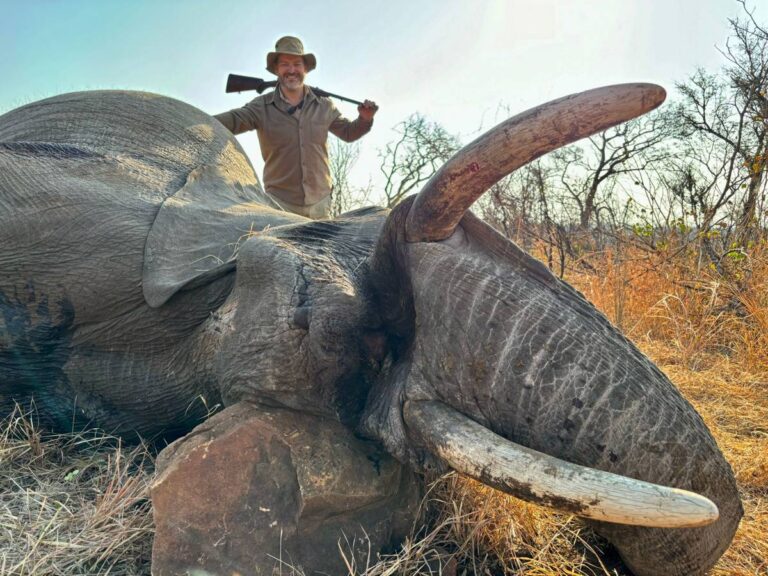
The Members Of The Big 7
The Big 7 animals of Africa make every African hunting safari both challenging and memorable. These species cover a wide range of landscapes, behaviors, and hunting experiences, which increases their appeal for hunters comparing African hunting listings or searching for Africa big 5 extensions.
African Elephant
African elephants are the largest land mammals, weighing up to 13,000 lbs (5,900 kg). They roam savannahs and forests, often moving in herds. Their size, intelligence, and unpredictable temper make them a key target in big game hunting. Hunters encounter elephants mainly in southern and east Africa, where proper permits ensure legal hunting.
African Buffalo
Cape buffalo, known for their unpredictable nature, form large herds in grasslands and woodlands. Weighing between 1,100–2,000 lbs (500–900 kg), these animals can charge with little warning. Cape Buffalo Hunts are among the most sought-after challenges in African hunts, especially in Tanzania and South Africa. Their keen senses and group behavior raise the level of difficulty.
African Lion
African lions, recognized as apex predators, dominate open plains and savannah habitats. Mature males can weigh up to 500 lbs (225 kg). Spot-and-stalk hunting is common on an African hunting safari when seeking lions. Lions are symbols of Africa big 5 status due to their strength, pride structure, and elusive movements. Strict conservation rules regulate all lion hunting in Africa.
Leopard
Leopards occupy diverse habitats, from bushveld to riverine forests. Adult leopards usually weigh 80–200 lbs (36–91 kg). Their solitary and nocturnal habits make them difficult targets on any guided African hunts. Hunts often use baiting and tracking methods, with most hunts occurring in Zimbabwe, Namibia, and Mozambique.
Rhinoceros
African rhinoceros species on hunting safari in Africa include both black and white rhinos. Rhinoceroses reach up to 5,100 lbs (2,300 kg). Their thick hide and cautious movements increase the challenge. Game hunting safaris for rhino are rare and highly regulated to support conservation. Most rhino hunts occur as tightly controlled management operations.
Crocodile
The Nile crocodile adds a formidable aquatic challenge to the Big 7. These apex predators thrive in rivers, lakes, and wetlands across sub-Saharan Africa. Adults often exceed 1,500 lbs (680 kg) and can grow over 16 feet (5 meters) long. Crocodiles rely on stealth and ambush tactics, making them difficult to spot and even harder to approach safely. Their powerful jaws, aggressive nature, and aquatic habitat demand precise planning and expert guidance. Many African hunting safari brokers include crocodile hunts as part of Big 7 packages, offering experienced hunters a chance to complete the ultimate land-and-water pursuit.
Hippopotamus
Hippopotamuses, often found in rivers and lakes, have a stocky build and territorial behavior. Adults weigh between 3,300–4,000 lbs (1,500–1,800 kg). Hippo are part of dangerous game hunts due to their water-based habitat and surprising aggression. Many African hunting safari brokers include hippo in their packages for those seeking the extended Big 7 experience.
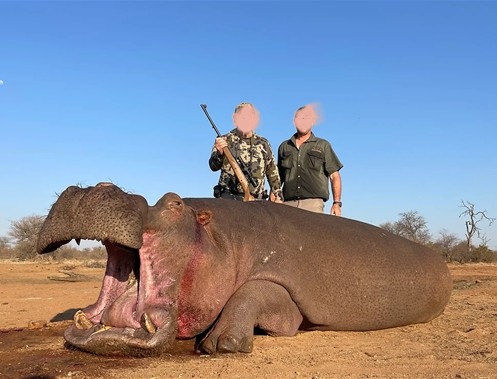
The Big 7 And African Wildlife Tourism
Big 7 hunting experiences attract international travelers, wildlife enthusiasts, and safari hunters because these species—elephant, lion, leopard, rhinoceros, Cape buffalo, hippopotamus, and crocodile—represent the most recognized icons of Africa's diverse fauna. We notice demand for game hunting safaris featuring the Big 7 rising steadily, especially among those seeking premium African hunting safari packages or targeting milestone achievements like Cape Buffalo hunts.
Game Hunting and Conservation Impact
Game hunting in Africa, specifically targeting the Big 7, intersects with wildlife tourism and conservation. Significant portions of safari-generated revenue support habitat management and anti-poaching programs. For instance, regulated hunting ensures sustainable populations for elephant, buffalo, and hippo. Most hunting safari in Africa listings detail quotas and seasonal limits to safeguard both species and local economies.
Diversity in Safari Packages
African hunting safari brokers and operators often showcase the Big 7 in their listings. Some organize guided African hunts around the specific goal of completing a Big 7 collection, letting participants experience a variety of landscapes—savannahs, wetlands, and riverbanks. Want a fast overview of opportunities? Many hunting safari in South Africa packages include:
-
Personalized itineraries matching skill levels and interests
-
Combination of dangerous game and plains game species
-
Flexible hunt durations from 7 to 21 days
These options appeal to both first-time visitors and repeat travelers searching for fresh challenges each season.
Key Destinations for Big 7 Hunting
Not every region offers the same suite of Big 7 species. Most Game Hunting Safaris pinpoint countries like South Africa, Zimbabwe, Tanzania, Botswana, and Namibia for complete Big 7 routes. High-demand areas feature:
-
Kruger region in South Africa for buffalo, rhino, lion, elephant
-
Okavango Delta in Botswana for hippo and crocodile
-
Selous or Ruaha in Tanzania for full Big 7 listings
The right package depends on the target species, trophy preferences, and desired hunt conditions. Plus, seasoned African hunting safari brokers help navigate permit processes and regional regulations.
Experiencing African Wildlife Beyond The Hunt
African wildlife tourism draws visitors beyond hunting. Travelers interested in photography, nature walks, and non-consumptive safaris can observe the Big 7 from close quarters. Guided tours highlight animal behavior without impacting populations. This synergy between hunting and eco-tourism keeps African environments resilient and boosts long-term viability for both sectors.
Table: Key Big 7 Safaris Facts
|
Species |
Common Safari Destinations |
Type of Habitat |
Avg. Adult Weight |
Notable Safari Feature |
|---|---|---|---|---|
|
Elephant |
South Africa, Zimbabwe |
Savannah, bush |
4,000–6,000 kg |
Largest land mammal |
|
Lion |
Tanzania, South Africa |
Savannah, grassland |
150–250 kg |
Group hunting, top predator |
|
Leopard |
Namibia, Botswana |
Woodland, riverine |
30–90 kg |
Elusive, mostly nocturnal |
|
Rhinoceros |
South Africa, Namibia |
Grassland, bush |
800–2,300 kg |
Both black and white species |
|
Cape Buffalo |
Botswana, Zimbabwe |
Wetland, grassland |
500–900 kg |
Highly sought after in dangerous game hunts |
|
Hippopotamus |
Zambia, Botswana |
Rivers, lakes |
1,500–3,200 kg |
Territorial, aquatic |
|
Crocodile |
Mozambique, Tanzania |
River, lake |
400–1,000 kg |
Ambush predator |
African hunting safari listings with Big 7 options connect guests with local guides and outfitters who ensure both safety and authenticity. Need more information? We update African hunting listings frequently with region-specific trophy stats, travel notes, and package details, making it easier to compare options for game hunting in Africa.
This deep integration of the Big 7 with wildlife tourism and guided hunts keeps Africa a top-tier destination for big game hunting, whether you're a veteran or exploring African hunting safaris for the first time.
Conservation Challenges And Efforts
Managing Africa Big 5 and Big 7 species faces real conservation challenges linked directly to human activities and ecological pressures. Habitat loss from agriculture, infrastructure, and expanding communities restricts key migration corridors for elephants, lions, and Cape Buffalo. Poaching, mainly for ivory, horns, and skins, continues to put rhino and elephant populations at risk—over 1,000 rhinos were lost to poaching in South Africa in 2014 alone. Pollution in river systems also impacts hippopotamus and crocodile survival.
Conservation efforts on the ground support sustainable African hunting safari practices. A portion of the revenue from Game Hunting Safaris and Hunting Safari in South Africa funds anti-poaching units and advanced monitoring technology. For example, several national parks reinvest earnings from guided African hunts to enhance security patrols and train rangers, protecting Big game hunting populations from illegal activity. Community-led projects now incentivize local people to support conservation, providing both employment and increased wildlife security.
Ethical hunting quotas, backed by annual scientific surveys, keep target populations stable without threatening species. These quotas, set by wildlife authorities and reviewed regularly, reflect current population data and success rates from past African hunts. Licensed African Hunting Safari Brokers must comply with such regulations, reducing the risk of over-exploitation in high-demand areas.
Translocation programs see wildlife managers moving rhinos, lions, and Cape buffalo between protected areas to boost genetic diversity and relieve population pressures in crowded reserves. Partnerships between private conservancies and government agencies extend the area available for hunting in Africa while ensuring that all activities remain within legal frameworks. As a result, many Hunting safari in Africa destinations can offer reliable experiences even when certain species migrate or change range seasonally.
Growing interest in Cape Buffalo hunts and other Big 7 hunts motivates long-term habitat protection. The continued availability of these animals in hunting listings helps justify large conservation areas and fund their upkeep. This sustainable-use model links responsible Game Hunting directly with the preservation of Africa’s most iconic wildlife.

Conclusion
Exploring the Big 7 gives us a deeper appreciation for Africa’s wildlife and the complex environments these species call home. As we plan our next adventure or consider the impact of our travel choices, understanding the Big 7 helps us make informed decisions that support both conservation and responsible tourism.
By recognizing the importance of these magnificent animals and the habitats they represent, we’re not just chasing a milestone, we’re contributing to the future of Africa’s wild places and the communities that protect them.
What Makes the Big 7 the Ultimate African Hunting Adventure
The term “Big 7” captures the imagination of adventurers planning African game hunting safaris. While many recognize the famous Big 5—elephant, lion, leopard, rhinoceros, and Cape buffalo—the Big 7 adds the formidable hippopotamus and crocodile, making the experience even more thrilling. To discover opportunities that bring these legendary hunts to life, browse our full range of Big 7 hunting safari packages designed for both first-timers and seasoned hunters.
Frequently Asked Questions
What are the Big 7 in African game hunting safaris?
The Big 7 refers to seven iconic African wildlife species: elephant, lion, leopard, rhinoceros, Cape buffalo, hippopotamus, and crocodile. This list expands on the traditional Big 5 by including the hippo and crocodile.
Why were the hippopotamus and crocodile added to the Big 5?
The hippo and crocodile were added to highlight the unique aquatic hunting challenges they present and to broaden the appeal of African hunting experiences beyond land-based species.
How do Big 7 safaris benefit wildlife conservation?
Revenue from hunting safaris supports conservation efforts, including anti-poaching programs and habitat management, helping maintain healthy populations of Big 7 species and protecting African ecosystems.
Which countries are popular destinations for Big 7 hunting safaris?
Top destinations include South Africa, Zimbabwe, Tanzania, Botswana, and Namibia. Each offers distinct habitats and opportunities to hunt or view Big 7 species.
Is hunting the Big 7 only for experienced hunters?
While experienced hunters often pursue the Big 7, safari packages can be tailored for first-timers. Guided hunts and personalized itineraries ensure safety and a quality experience for all skill levels.
Can non-hunters participate in Big 7 safaris?
Yes, many tours cater to wildlife enthusiasts, providing guided game-viewing and photo safaris focused on the Big 7, promoting eco-tourism and conservation awareness.
How do hunting quotas protect Big 7 species?
Strict hunting quotas and regulations control the number of animals that can be hunted, ensuring sustainable populations and supporting long-term conservation goals.
What challenges do Big 7 species face in the wild?
Big 7 species face threats from habitat loss, poaching, and human-wildlife conflict. Conservation programs funded by hunting and tourism help mitigate these pressures.
Are Big 7 safari packages customizable?
Yes, most outfitters offer customizable itineraries and hunt durations, allowing guests to focus on specific species, regions, or combine hunting with other wildlife activities.
How is hunting the Big 7 different from the Big 5?
The Big 7 includes aquatic species (hippo and crocodile), requiring different hunting skills and presenting new challenges compared to the land-based Big 5. This diversity enriches the safari experience.
